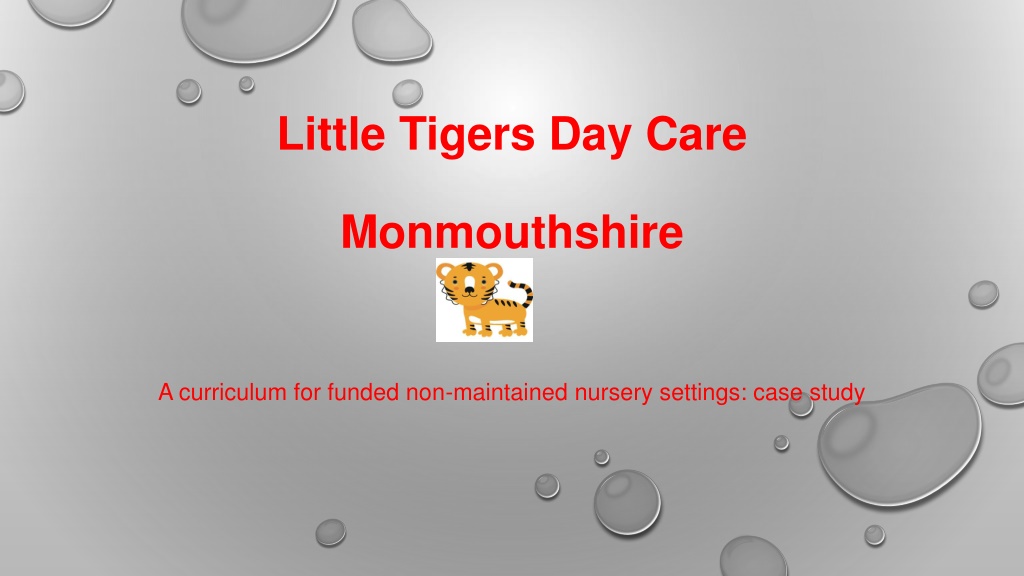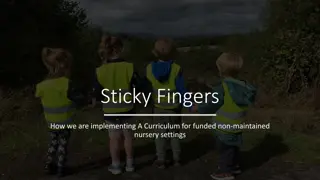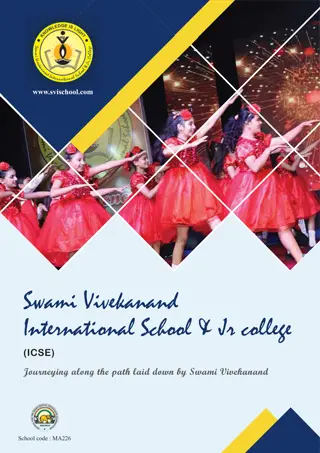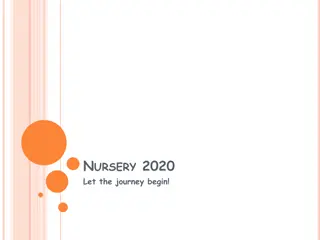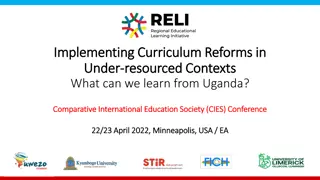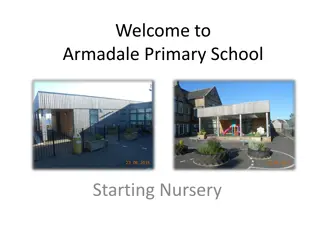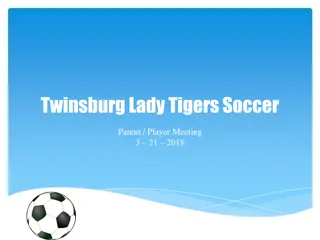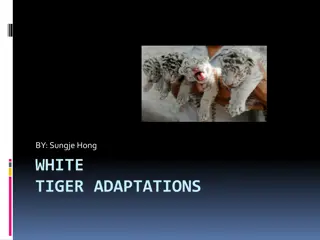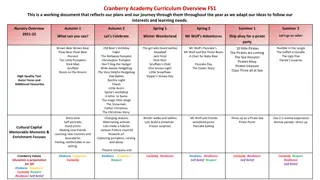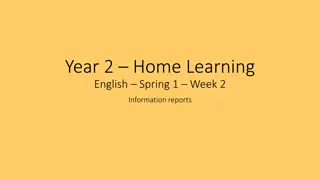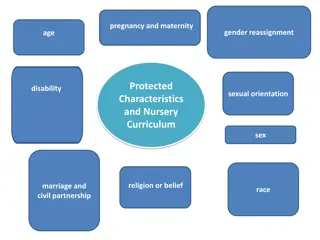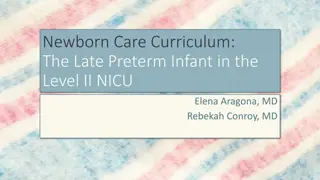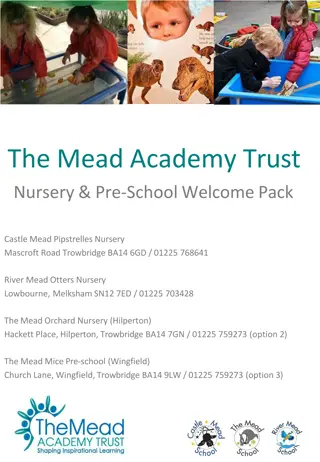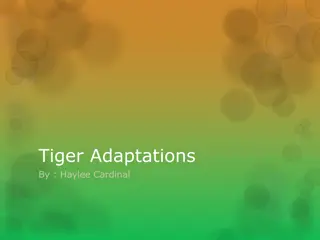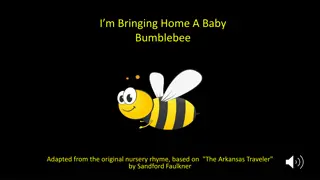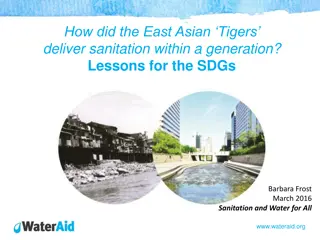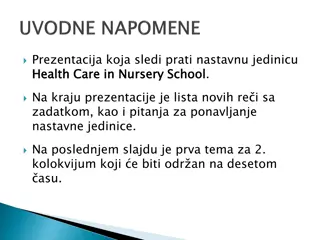Little Tigers Day Care: Implementing a Curriculum for Nursery Settings
Little Tigers Day Care in Monmouthshire has successfully prepared and implemented a curriculum for funded non-maintained nursery settings. Through staff training, collaboration with local authorities and schools, and a child-led approach inspired by Reggio Emilia and The Curiosity Approach, they have focused on authentic learning experiences for children. The team has made changes in planning, documenting activities, and creating environments that support uninterrupted play, fostering children's interests and language skills.
Download Presentation

Please find below an Image/Link to download the presentation.
The content on the website is provided AS IS for your information and personal use only. It may not be sold, licensed, or shared on other websites without obtaining consent from the author. Download presentation by click this link. If you encounter any issues during the download, it is possible that the publisher has removed the file from their server.
E N D
Presentation Transcript
Little Tigers Day Care Monmouthshire A curriculum for funded non-maintained nursery settings: case study
Introduction Little Tigers Day Care opened in 2011 in the community of Rogiet, Monmouthshire. We are registered for 28 children per session. We hold two educational sessions a day. We are open 8am until 5.30pm Monday to Friday for 50 weeks of the year. During half terms and summer holidays we run a holiday club. We also run a breakfast club and after school club. There are 6 qualified members of staff. We have two sister settings, one in the same community of Rogiet for under 2 s and another in Chepstow, which is a flying start setting for 2-year-olds and above.
How Little Tigers prepared for the curriculum for funded non- maintained nursery settings We began planning to implement the curriculum by staff attending training provided by the Education Achievement Service (EAS) and Monmouthshire local authority. We also worked together with the primary school (Rogiet Primary School) taking part in their training days. We held staff meetings to discuss the curriculum, share ideas, and discuss how we can move forward providing authentic learning experiences for the children. Our manager was also part of the Welsh Government s co-construction of the curriculum. We as a team continue to carefully explore the curriculum and how we, as enabling adults, are part of the curriculum. Staff have undertaken training in Schemas , Enabling Environments , Quality Observations , Positive Interactions and Attachment in the Early Years made available by Monmouthshire local authority, South East Wales Education Achievement Service Consortia and Early Years Wales. This training has enabled us to enhance our setting, alter our environment and really focus on how we provide a curriculum that is child led. We have taken inspiration from Reggio Emilio and The Curiosity Approach. We have taken the opportunity to gather information and guidance from various books, for example, Can I go and play now ?, Interacting or Interfering ?
Implementing the curriculum in Little Tigers Implementing the curriculum for funded non-maintained nursery settings has bought lots of change for us as a team and in some parts. This included considering how we plan, how we document learning activities, and how we record developments. However, change is good, and we believe this is a much-welcomed curriculum for the non- maintained sector. Through many discussions, using our self-evaluation, and our setting improvement plan we have been able to see how we can alter our environment and why we need to make such alterations. We will continue to make further alterations and adjustments to our environment; such changes are allowing us to see what areas are working for the children and what areas the children do not engage with. As practitioners we value un-interrupted play is a key aspect of early years pedagogy. We are constantly working on being supportive but not intrusive to children s play. Sometimes we just need to sit and listen to what is going on. From listening we can understand each child s interests and levels of language skills.
The four purposes Through looking at the four purposes in depth and looking at what we were providing we quickly realised that we already incorporate many areas through our current practice. This was reassuring to us as a setting, as we could see that we did not need to make major changes but enhance the areas of practice we do well and address some gaps to implement the curriculum more effectively. We allow our children to take risks, we provide authentic experiences using real resources, and we support the children in building positive relationships based on trust. We needed to look in depth at what we were not providing within the four purposes. One thing we did that helped us reflect on the child s experience was to walk around the setting at a child s level to be able to see what they see. Were the displays at their level and relevant? Could they access resources independently? Was the room layout appropriate? The layout of the room is crucial, and this is one thing that we knew we needed to change to ensure we created an effective environment. We needed to tap into the children s interests. We mind mapped and used a white board for staff to practice recording children s interests. We then looked at how we could tap into these interests. Staff are now much more informed of the need to provide a rich learning environment that promotes the four purposes for each child.
What changes have we made? Added real resources to play china cups, china plates, steel cutlery Plants and greenery to make the room more calming Removed many plastic items and replaced with real items Lowered display boards to be more at child level Added woodwork to daily play Allow the children to prepare and deliver snack More community walks and involved within the community Increased opportunities for free flow and allow the children to decide when they want snack or what book they want to read More engagement from parents and family members More accessible resources
The Five Developmental Pathways Belonging Belonging is an extremely important aspect for children. We ensure we include the children in decision making throughout the day. We hold stay and play sessions for parents and families to attend. These are very much enjoyed by all, they allow us to build relationships with the child s family. We personalise their pegs and cubby drawers. We encourage the children to talk about themselves, their home lives and their families. The pictures they draw are displayed for them to see this is a big sense of achievement for them. We support the children in expressing their emotions and feelings, and we talk about them. We aim to build a positive sense of identity. Communication We encourage story telling by the children, they love to re-tell a story in their own words to their friends. We ask open ended questions encouraging detailed responses. We listen to children with intent and enthusiasm and let them tell us all about what happened. We use songs, rhymes and chants, whether this be verbally or through body language. We use sign language and visuals to communicate daily with all children. Staff use positively framed language; we do not use the word no . It may seem strange to some, but there are many other responses that can be used in a positive way to encourage communications. We incorporate the Welsh language into our everyday communications.
Exploration We know that exploration promotes brain development and children learn from making mistakes. The play we provide fosters exploration and imagination and in turn builds competence and confidence. Children are explorers in their own right it is our role to enhance this learning. We provide magnifying glasses if they are looking at bugs, materials if they are building, glasses to be like nanny! We have an allotment which creates lots of exploring, and chances to observe plants, living things, and to care for these. We even had a visit from a parent's pony that she bought into us in our garden. We use the iPads to investigate and research, to look at things of interest at that time. We are lucky enough to have a strong relationship with our adjoining school and prior to transition time, we explore the school and find out where things are located. Physical Development We found that we already do a lot of physical play. We do yoga sessions, dance and free play which includes unstructured physical play. We incorporated our community walks and allotment works into our physical development opportunities. However, we wanted to increase this further. We decided to use the school field to promote larger gross motor development and promote endurance. Running, bikes, ball play and chase all work well with the children. We have welcomed weekly visits of Physical Literacy sessions funded by Monmouthshire local authority. These sessions also supported staff in exploring various ways to support physical development.
Well-being We promote well-being within our setting by allowing children to explore, to be spontaneous and manage their emotional reactions through movement. Staff model positive behaviours and give effective praise. Children s well- being is combined by physical, mental, emotional, and social development. Staff foster positive well-being from an early age. We offer opportunities for play and learning that acknowledge children s beliefs and cultural backgrounds. We create an open and welcoming setting and encourage families to take part in the service we provide. We support the children in learning self help skills, such as independence and self care. Additional Learning Needs (ALN) We have had a large influx of children with additional learning needs; mostly significant needs. We feel the curriculum is more inclusive and flexible for children with ALN. It is less rigid and more focused on the needs of the child; this in turn encompasses the needs and rights of the child. We have developed our quiet room to provide the children with a quiet space to be supported and for staff to elaborate on teachable moments . Repetition is key. We have allocated keyworkers and 1:1 s who work with and support the children closely. Sharing information We share information with other settings in our area, management take part in a chat group and regularly exchange ideas and support each other with constant changes to the early years. We follow social media sites that are also a wealth of information for staff. Information is shared during network meetings and via advisory teachers, informative information that is always welcomed.
Pedagogy The method of pedagogy within the curriculum for funded non-maintained nursery settings is much broader and holds the child at the center. We are eager to be moving forward with the curriculum and to allow the children to flourish and develop in their own ways and at their own paces. We believe through engaging experiences and effective environments created by enabling adults the pedagogy is appropriate for all of our youngest learners and how they learn will depend on how you adjust your setting to meet their individual needs.
